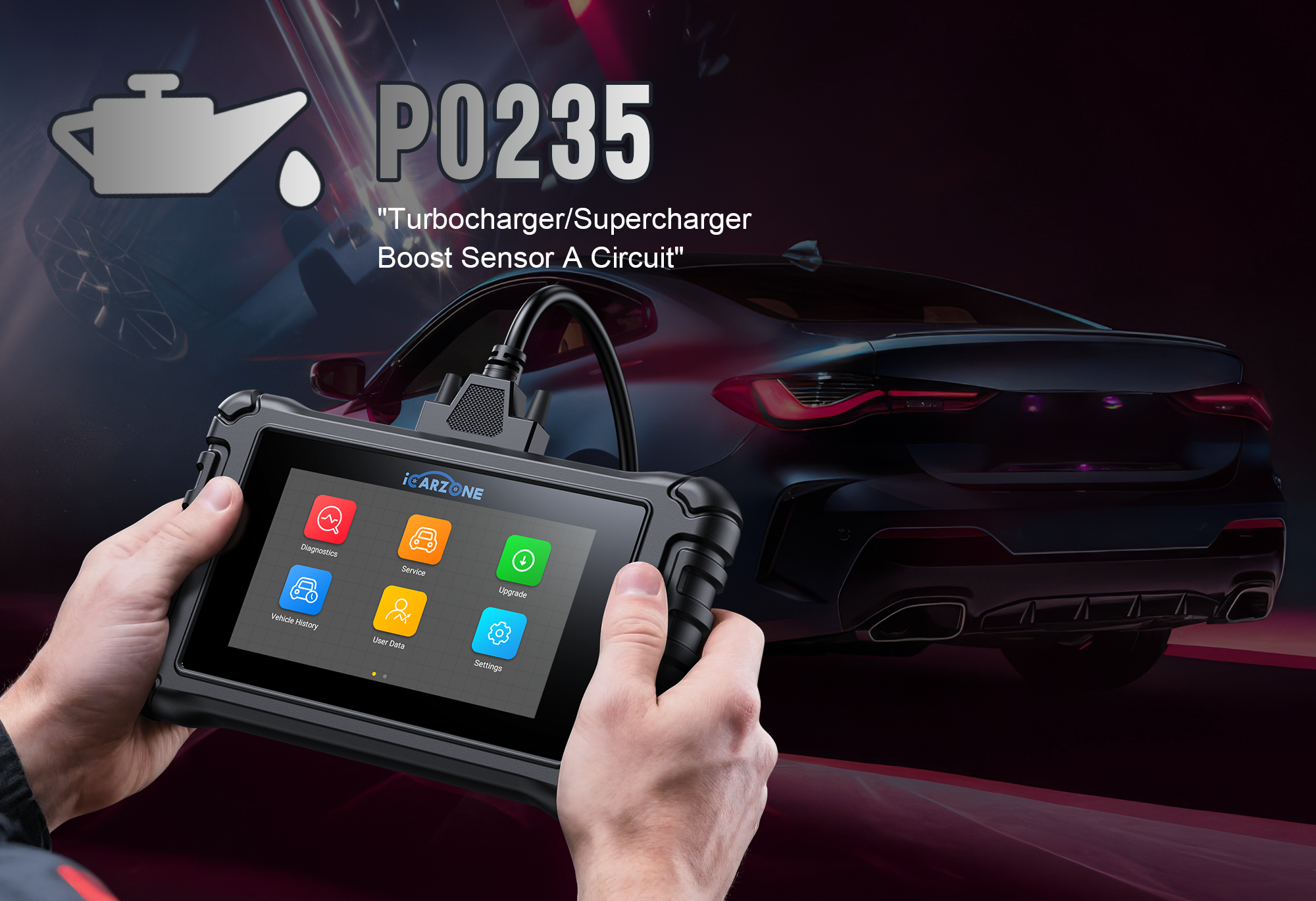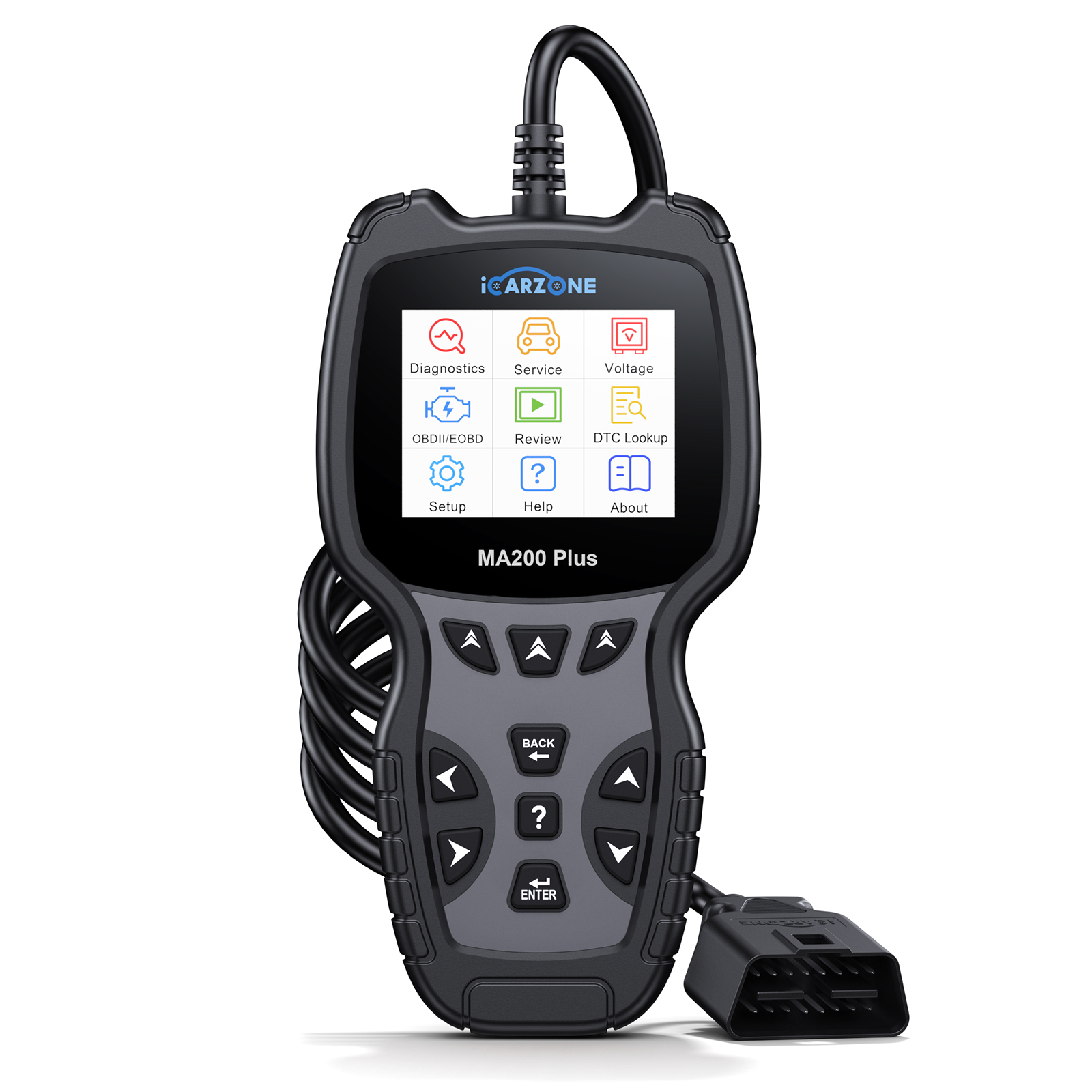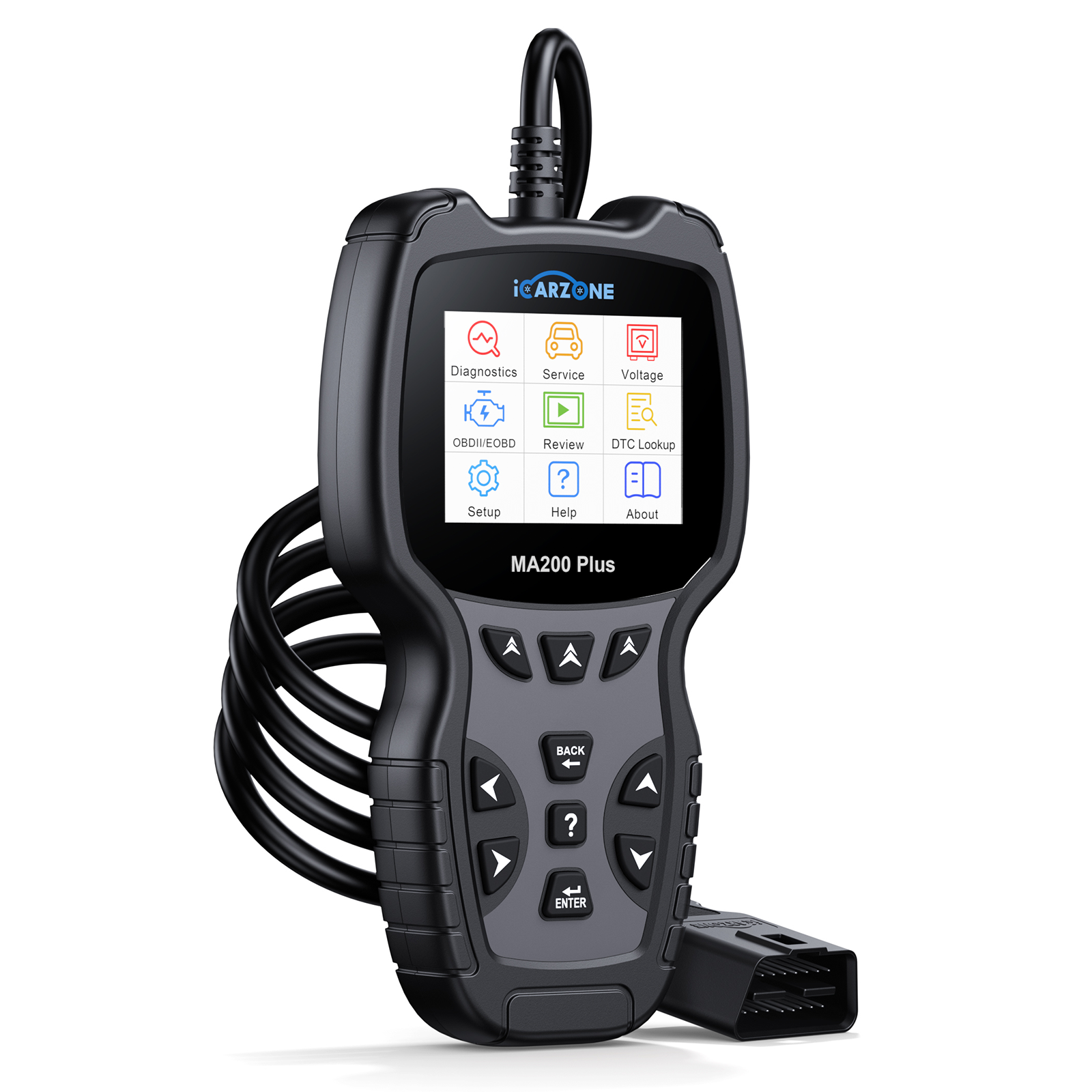P0235: Turbo Boost Sensor Issues in Ford F-150 (EcoBoost) | iCarzone UR800 Guide

P0235: Turbocharger Boost Sensor A Circuit Malfunction
P0235 affects turbocharged vehicles like the Ford F-150 EcoBoost, causing power loss. Learn causes, diagnostics, and fixes using the iCarzone UR800 scanner.
Get UR800 Diagnostic Tool1. What is P0235?
P0235 is a Diagnostic Trouble Code indicating a Turbocharger/Supercharger Boost Sensor A Circuit malfunction. This sensor (often called a manifold absolute pressure sensor) monitors boost pressure in turbocharged engines, sending critical data to the ECU for optimal performance.
Why It Matters
In turbocharged vehicles like the Ford F-150 EcoBoost, proper boost pressure regulation is essential for power delivery and fuel efficiency. A faulty sensor circuit can cause the ECU to enter limp mode, severely limiting engine performance.

2. Common Causes & Ford F-150 Examples
P0235 primarily affects turbocharged engines. Here are verified causes with 2018 Ford F-150 EcoBoost 3.5L examples:
- Failed Boost Sensor — Example: F-150 owner reported P0235 and power loss. Testing showed the sensor output was erratic; replacing the OEM sensor resolved the issue.
- Damaged Wiring Harness — Example: F-150 with 80,000 miles developed P0235 after hitting a large pothole. Inspection revealed a chafed wire near the turbo heat shield shorting against the manifold.
- Corroded Connector — Example: Coastal F-150 had water intrusion in the sensor connector, causing corrosion and intermittent P0235 codes during wet weather.
- Boost Leak — Example: F-150 showed P0235 after intercooler hose came loose, causing pressure fluctuations that confused the sensor.
- ECU Communication Error — Example: 2019 F-150 required ECU reflash to correct software misinterpreting sensor data, which was triggering false P0235 codes.

3. Key Symptoms
Ford F-150 EcoBoost owners typically report these P0235 symptoms:
- Check Engine Light illuminated (often with reduced power message)
- Significant loss of acceleration power (especially above 3,000 RPM)
- Turbo "lag" or delayed boost response
- Erratic idle or hesitation during acceleration
- Increased fuel consumption
- Limp mode activation during heavy acceleration

4. Vehicles Prone to P0235
While any turbocharged vehicle can develop P0235, these models are most commonly reported:
- Ford F-150 EcoBoost (2.7L, 3.5L)
- Chevrolet Silverado 1500 with 2.7L Turbo
- Volkswagen Golf GTI/Jetta GLI
- BMW 3 Series (335i, M340i)
- Dodge Ram 1500 EcoDiesel
- Audi A4/A5 with 2.0T engine
Ford has issued TSB 19-2249 for 2018-2019 F-150 EcoBoost models experiencing P0235 due to sensor connector issues.
5. Diagnostic Steps (Ford F-150 Focus)
Diagnose P0235 systematically using the iCarzone UR800, following this F-150-specific procedure:
| Step | Action | Tools Needed | Goal |
|---|---|---|---|
| 1 | Scan DTCs & Live Boost Data | iCarzone UR800 scanner | Confirm P0235 and check boost pressure readings (should reach 18-20 psi under load) |
| 2 | Locate & Inspect Sensor | Flashlight, basic tools | Find sensor on driver-side intercooler pipe (F-150) and check for damage |
| 3 | Test Wiring & Connector | Multimeter, wire probe | Verify 5V reference, ground, and signal wires; check for corrosion |
| 4 | Check for Boost Leaks | Boost leak tester, soapy water | Test intercooler hoses and connections for leaks under pressure |
| 5 | Monitor Sensor Output | UR800 (live data) | Verify sensor responds correctly to throttle input (idle: ~14.7 psi, load: 18+ psi) |
Example: A 2018 F-150 with P0235 showed normal voltage but UR800 live data revealed the sensor never exceeded 12 psi. Further testing found a cracked intercooler — replacing it resolved the code.
Diagnose F-150 with UR8006. Fixes & Execution
- Replace Boost Sensor: Use OEM or high-quality sensor (Motorcraft CM5223 for F-150) when readings are erratic or absent.
- Repair Wiring Harness: Splice damaged sections with heat-shrink connectors; protect from heat near turbo components.
- Clean/Replace Connector: Use electrical contact cleaner; apply dielectric grease to prevent corrosion (especially in humid climates).
- Fix Boost Leaks: Replace cracked hoses or loose clamps; retighten intercooler connections to spec.
- ECU Reprogramming: Update to latest Ford calibration using UR800 to resolve software-related P0235 issues.
F-150 EcoBoost Specific Workflow
- Use UR800 to check for TSBs related to your VIN.
- Inspect the easily accessible boost sensor first (located near the air intake).
- Check common F-150 leak points: intercooler end tanks and charge pipes.
- Test sensor before replacing — many F-150 P0235 codes are wiring/leak issues, not sensor failures.
7. Repair Costs & Safety Tips
- Boost Sensor (OEM): $60–$150 (Ford Motorcraft CM5223)
- Wiring Repair: $80–$200
- Intercooler Hoses/Clamps: $40–$120
- ECU Reprogramming: $100–$250
- Professional Diagnosis: $100–$150 (can be avoided with UR800)
Safety Precautions
- Allow F-150 engine to cool completely before working on turbo components to prevent burns.
- Disconnect battery when repairing wiring to avoid short circuits.
- Use torque wrench when reinstalling turbo-related components (F-150 charge pipe bolts: 89 in-lbs).
- Clear codes with UR800 after repairs and perform test drive under load to verify fix.
8. Preventive Maintenance
F-150 EcoBoost owners can prevent P0235 with these steps:
- Inspect boost sensor connector quarterly — apply dielectric grease if corrosion appears.
- Check intercooler hoses during oil changes for cracks or loose clamps.
- Use the iCarzone UR800 to monitor boost pressure regularly (should maintain steady 18-20 psi under load).
- Avoid aggressive driving when engine is cold to reduce turbo stress.
- Follow Ford's 5,000-mile oil change interval using recommended 5W-30 full synthetic oil.
9. Frequently Asked Questions
Short distances may be possible, but power loss and limp mode make highway driving risky. Fix promptly to avoid further issues.
Indirectly. Prolonged driving can cause the ECU to run rich, potentially fouling turbo components over time.
Yes, especially 2017-2020 models. Ford issued TSBs to address sensor connector and software issues.
UR800 reads live boost data, identifies TSBs, tests sensor values, and clears codes — critical for F-150-specific diagnosis.
10. Summary
P0235 is a common issue in turbocharged vehicles like the Ford F-150 EcoBoost, causing power loss due to boost sensor circuit problems. Diagnose with iCarzone UR800 to check sensor data, wiring, and boost leaks. Fixes range from sensor replacement to wiring repairs, with most issues resolvable without professional help using the right tools.
Fix F-150 P0235 with UR800
The iCarzone UR800 is optimized for Ford diagnostics, reading live boost data and identifying F-150-specific issues to resolve P0235 quickly. Perfect for DIYers and enthusiasts.
Order UR800 for F-150








